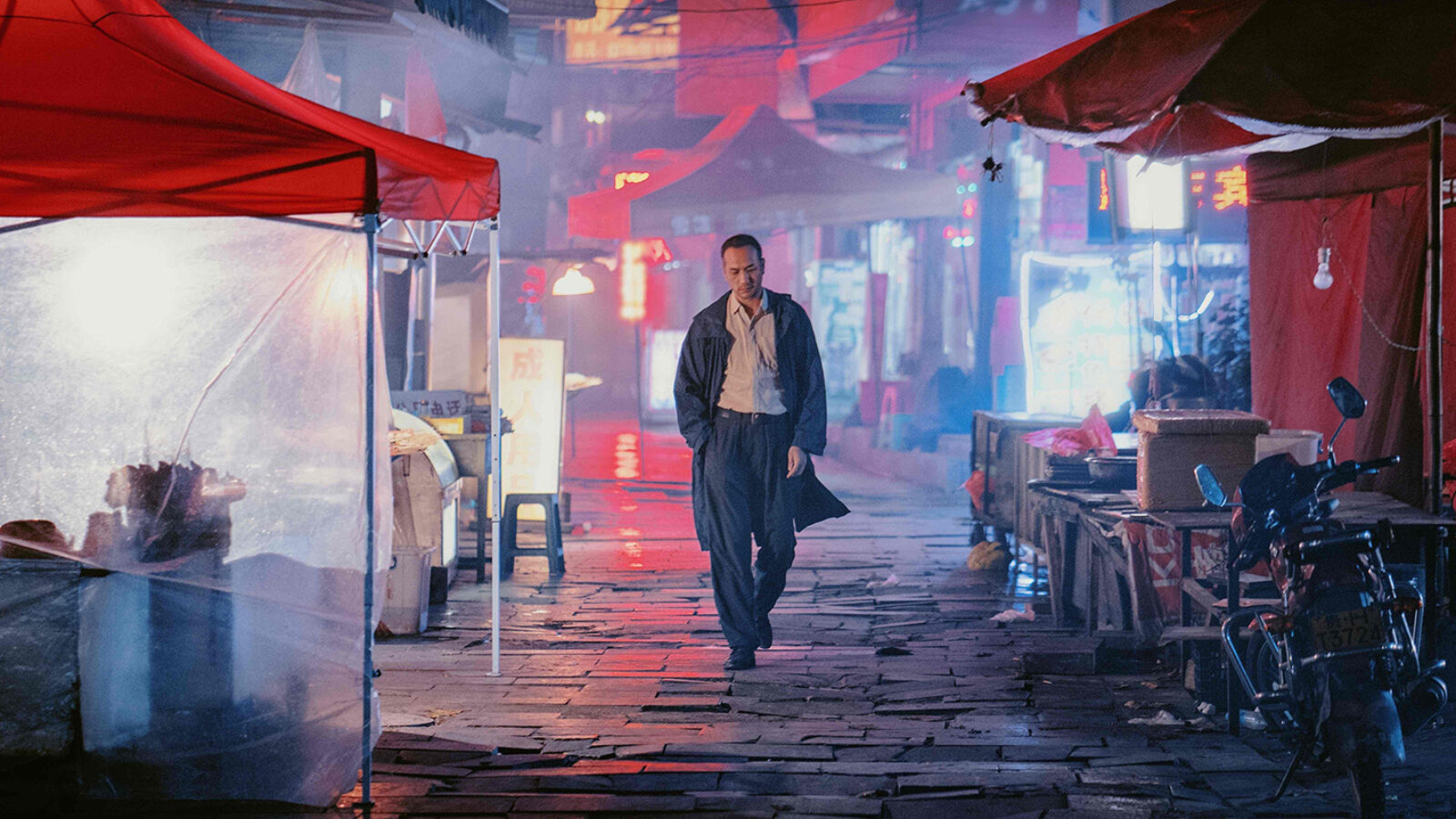
Overnight to Distant Cities
In Chinese director Bi Gan’s follow-up to his acclaimed debut Kaili Blues, an emotionally wayward man searches for his former lover across southwest China. With only memories to guide him, his waking life soon opens up on a three dimensional dream world. Culminating with a virtuoso 60-minute long take, Long Day’s Journey Into Night reimagines the emotional and existential capacities of the moving image.
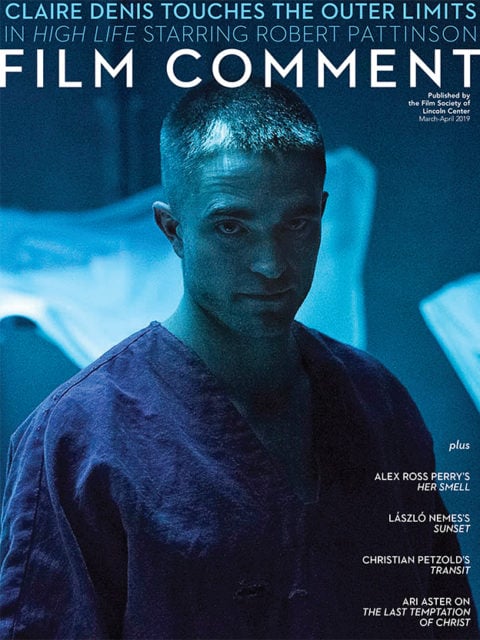
This full length interview, excerpted in the print edition, is only available online.
Can you tell us a little about your connection to your hometown of Kaili, and what about it culturally has influenced you to set both of your films there?
It’s very normal for me to use Kaili as one of the characters, so to speak, in my films, because this is a place I was born in, a place I grew up in, and a place I’m still living in. My first film, Kaili Blues, is very much about the gloomy days of Kaili, whereas Long Day’s Journey Into Night is about the darkness of Kaili.
Kaili is a place in the southwest of China, where you have a lot of minorities, including the Miao people. One of the interesting cultural aspects of the Miao minority is music. In this particular film I integrated the music and harmony of the Chet of the Miao minority as a way to summon their spirits as the film progressed. And spatially, Kaili is a small town, what we call a fourth of fifth tier city. But at the same time we also have the development of the high speed train and a similar integration of rural and urban areas that is developing all over China. In terms of a cityscape, it might be similar to other fourth or fifth tier cities, but for me it’s more important to somehow find the aesthetics of the city that I want to capture. For me what’s unique about Kaili isn’t the cityscape, but the spirits and the atmosphere and the people and the way that they express themselves. That’s what I feel close to.
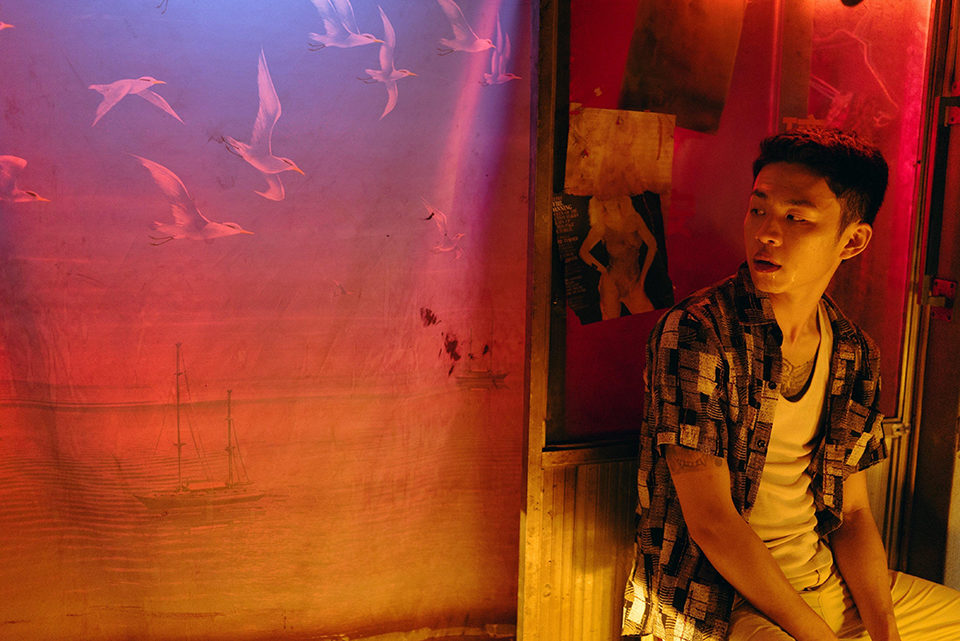
All images courtesy of Kino Lorber
I’m curious about the development of your screenplays, which from a narrative standpoint are quite complex. Is this all mapped out beforehand, including the dialogue? And if so, is there any improvisation or reworking of certain scenes after they’ve been written?
For this script I wrote it in a way that’s very complete, very full. But when we went into production we suddenly realized that there were a lot of restrictions and limitations and difficulties that we needed to make adjustments for. The film had actually gone into production for a short period of time before we had to stop shooting to figure out exactly how we were going to do this. I often joke about this, but we sort of had to throw away the script I had written and start from the beginning once we restarted the production, coming up with a new shooting script every single day. The reason why there were so many difficulties is because of the sets and locations—the art direction just wasn’t really working the way I wanted in those spaces. So we brought in a new art director, Liu Qiang, and he really got us back on track, not only with our schedule but also with how I wanted to manipulate the long sequence shot. The spirit of the plot, the dialogue, and the original script ended up changing a lot because of the locations and the coordination of the mise en scène for the long take. If you look at the full script and the final product, the film is definitely simpler. Along the way we realized that a lot of the story lines and characters that we had developed fully might be too complicated for the audience to digest and process. So not only were we simplifying during the production, but also during the editing process. The film you see on screen is a something of a simplified version of the original script, but what remained is the love story, which we boiled down to just these two characters.
From what I understand you have a background in poetry. Can you talk a little bit about your films’ relationship to poetry and how you might find those two practices overlapping when you begin making a film?
I do believe poetry and film are two separate expressions and art forms. But at the same time when you combine these separate art forms you can create something very magical. I started incorporating poems into my films when I was a college student doing film assignments, and also in my first short films. In Kaili Blues, since the main character is a kind of mediocre poet, I included many of my personal poems in the film since they happened to work well with this particular character, and they could help express his inner thoughts about himself and how he sees the world. It became a crucial part of that film. For Long Day’s Journey, since none of the characters are poets or relate to poetry, I still tried to incorporate a poetic element in the film in the form of the spell that the two characters recite towards the end of the film that causes the room to spin around.
I know you had a bigger budget for this film and were able to recruit some fairly well known actors, like Sylvia Chang. What was the casting process like and did you have an idea about who you wanted to work with going in?
Casting actually had little to do with the budget. It was very much about whether each actor fit the role and what I wanted to capture in the film. The producers and I really didn’t have a lot of experience with budgeting for actors and actresses. When we started we probably only had half the budget we needed to make the film, so money didn’t really enter the equation as we began to cast the roles, and no one ended up being paid very much to be in the film. I began with the characters: the film is in neo-noir genre, so I thought, I need an actress to represent this femme fatale character that will feature in much of the first half of the film. The face of this femme fatale was very important, and the first face I thought that could fit this role was Tang Wei. I sent her and her team an outline of the film, and then we met and I realized my instincts were correct and she would be perfect for the role. For Sylvia Chang, I went to Taiwan to ask for her support and participation in this film because she has been very supportive of young, emerging directors in the Mandarin speaking community. She agreed and ask how she could help and I told her that I thought she would be perfect for this mother character who enters during the second half of the film. She might not have the screen time of Tang Wei, but her character’s spirit would be a crucial part of the second half of the film—it needed someone with that kind of life experience and that kind of maturity.
And lastly, Huang Jue: he’s a friend of my producer. He embodied a lot of qualities that could make this protagonist character come to life. Externally he’s very strong and masculine, but he’s also a very tender and loving person—he’s a great combination of hard and soft. And he happened to be a big fan of my first film, so it was easy to get him on board.
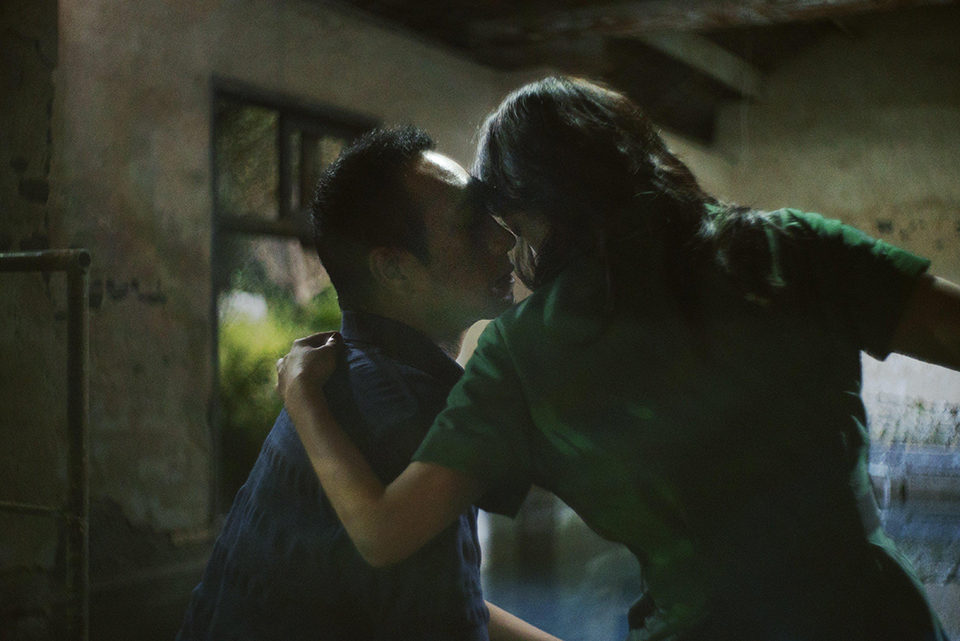
I know that you had the idea to utilize 3D from the very beginning of the film’s development. Was that because you felt you didn’t accomplish something in Kaili Blues that the use of 3D might be able to help more fully realize, or why was 3D something you knew you wanted to experiment with in this film?
Yes, the idea to implement 3D was there from the very beginning, but not in order to express something that I couldn’t in Kaili Blues. I pretty much said what I needed to say in Kaili Blues, because Kaili Blues is a film about time—temporality is very important to that film. Long Day’s Journey, on the other hand, is more about memory and dreams. And I thought that in order for me to somehow express the essence of memories and dreams I needed 3D to realize that. Also, structurally, I knew from the beginning that 3D would be important. In the past you may have seen films that are in two parts, that may be black and white in the first half and then color in the second. For me, how I envisioned the film structurally was to have the 2D element comprise the first half, and have 3D for the second. But the way I’m using 3D isn’t done to capture the audience’s attention—that’s not what I’m trying to represent or express. This film is actually post-converted from 2D to 3D. It’s not like those big budget films where you’ll have these very lifelike 3D objects around or in front of you. For my film, I merely wanted to use 3D to capture what it’s like to dream, to have these memories conjured up in your dreams.
Kaili Blues utilizes a time warp concept, where you have different temporal elements being combined in an achronological way. This film isn’t really about those kind of interwoven, time-based elements—it’s about capturing a sense of dreams and memories. So that’s why I wanted to utilize the 3D element in the second half of the film, as well as a single, uninterrupted shot: I wanted to capture the passing of time and a particular dreamscape. If you think about how we dream, it’s not in a very fragmented way. For me, when we say we had a dream, it’s as a kind of uninterrupted sequence.
What is it about the bifurcated structure that interests you? Of course Long Day’s Journey has a strict two-part design, but Kaili Blues also has a very pronounced structure based around an extended tracking shot. What draws you to these particular formal constructions?
I see Kaili Blues as being in three parts, rather than two parts. But for me the two part structure of Long Day’s Journey has a lot to do with the space that I found, where I wanted to set my story and have it come to life. And after having found this space I knew it was where I wanted to set the second half of the film. I knew that it could carry the second half of the narrative into the night. And the second half would also feature a woman who’s innocent, naive, and still pure, in a very different way than the woman in the first half, the femme fatale character. So that’s where the contrast between the parts originated, in both the space and the contrast between the female characters.
I’m curious about your development as a movie goer. You grew up in the age of the internet, and your films bear out a wide-ranging set of influences that you aren’t afraid to showcase. How much do you think having access to these films early on helped shape your directorial sensibility?
We do indeed live in an era where we have a lot of resources to watch great films by past masters. But I think the difference between the past and now is that back then, in order to make films or become masters, filmmakers had to be supported in such a way as to have the resources to not only make films but also have the resources to actually watch the classics. Whereas nowadays more people have access to watch films and become inspired by them, just as everyone has more resources to make films. It’s become very user friendly. The threshold for someone to learn from those master filmmakers and then become a filmmaker is very low. That’s the reason why someone like me can make films and have them be seen, and I can express myself through the filmmakers that inspire me. But I think there are many ways to get inspiration of your film work: you can watch other films, but your can also do it through reading and other channels.
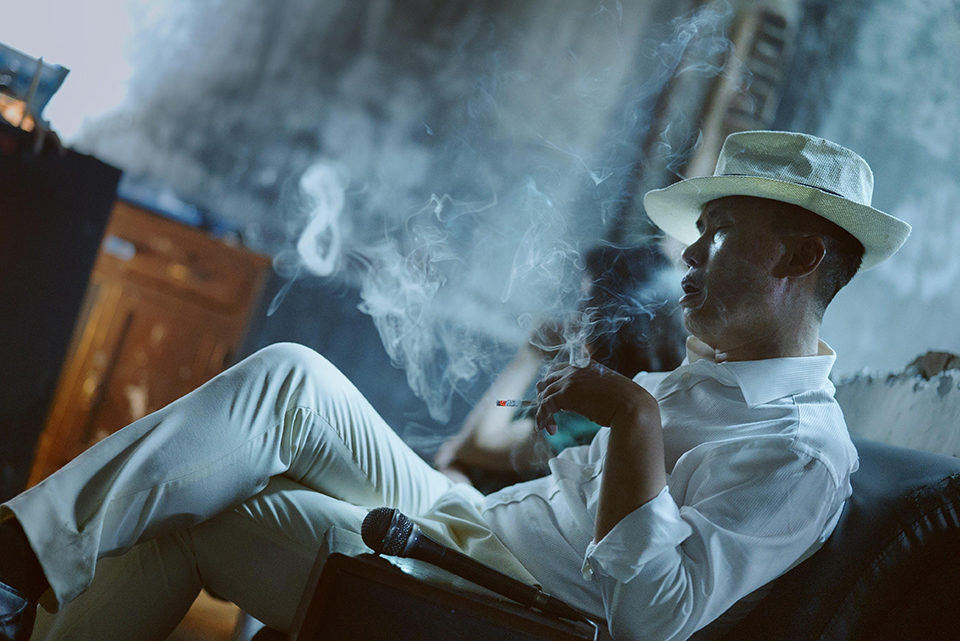
Can you describe the practical and technical particulars of designing such a long and complex tracking shot? How did you go about mapping the space and figuring out how your camera would navigate such an extensive amount of ground? And then from there can you talk about choreographing the shot with your actors and how that process played out?
There were many moving elements that I needed to coordinate in order complete the sequence. I started with the space: structurally, the plan was to map this ever descending movement from memory into a dream. So over the course of the shot we would go from high ground to low ground, following every step of the way. That was the descending motif I wanted to capture. Technically, we wanted to accomplish this first by using a zip line to go from the high ground to the pool hall down below, and from the pool down another level by using an apparatus with magnets attached to a drone that would fly down to the bottom level. We knew this would take a lot of ingenuity, for the technical directors as well as the crew, particular to find a way to attach the camera to the drone and make it fly down smoothly.
In terms of the equipment we had to think about what cameras we could use to shoot at night, as well as which cameras would work best to post-convert the 2D footage to 3D. And because there’s a lot of movement, horizontally but also vertically, we had to find cameras that would be stable enough to make the journey. And then we rehearsed, first to test the light and how we were going to compose each frame within this larger sequence, and then with the actors to familiarize them with the space but also, based on their movements and the narrative, to make more adjustments to the lightning and camera choreography. During the rehearsals we tried to leave some room for improvisation, so to speak, particularly at the pool hall. We wanted to allow a little more freedom in this sequence, where the camera could move along with the white cue ball on the table. I thought it would be interesting, rather than following certain faces or environmental elements, to have the camera focus on the white ball, and with that the actors would come into the shot on cue. I thought this would add a little more visual interest, as well a little more freedom to the cast and crew.
Do you feel like you were able to accomplish more by post-converting the footage to 3D rather shooting it in a more traditional way, with multiple cameras? Or, for that matter, do you feel like anything was lost in the post-conversion process?
We originally planned on shooting the sequence with multiple cameras, but we figured out quickly that it would be almost impossible, not only to find the right cameras but to pull off the shot the way I wanted it. So I explored other options and watched some films that were post-converted and I saw that it wasn’t as bad as I had anticipated, and it could actually meet the needs of the film and the way I wanted the film to feel. Because I don’t think for this particular film the 3D needs to be super detailed, realistic 3D. I just wanted it structurally to have to have this very different feel from the first half of the film. So in the end I’m actually happy with the post-conversion process and how it allowed me to express what I wanted to with the film.
Having said that, after finishing the film I talked with Ang Lee about the possibilities of 3D and the state of the technology and I realized how much uncharted territory there is for me to tap into, in terms of how real it can look and feel. So in the future I may explore the possibilities of using real 3D. But for this film I think the post-conversion process allowed me to express myself perfectly
Were there any digital tricks used at all in the shot we see in the final film? I think people may assume it’s stitched together from multiple takes.
We did do some modifications and adjustments in post-production. But I have to say as far as there being multiple shots stitched into one, I don’t think as a viewer or as a director that it’s really that important. To me it doesn’t make a big difference. Now, having said that, the film that you saw—the final cut—is indeed one uninterrupted sequence. There is no stitching involved.
The modifications and adjustments we made were for minor details. For example, when the drone landed on the lower level it sort of got in the frame a little bit, so we needed to figure out a way to digitally remove that. And there were other some details along the way that we felt we had to make adjustments to in post-production and quote-unquote manipulate for the final version.
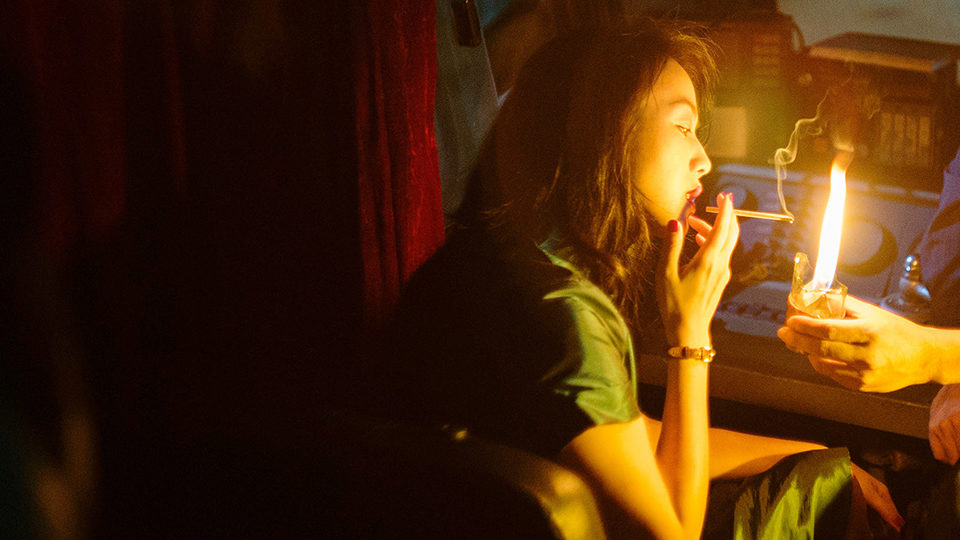
I understand you continued to rework the 3D in the months after the film’s premiere in Cannes. What was that process like and what exactly were you fine tuning?
There actually weren’t that many changes between the Cannes version and the one you’re seeing now, at least as far as the 3D. We just implemented some more of those minor post-production touches. But structurally that whole sequence is the same.
The differences between the two versions are actually in the first half. The reason for is because at the time I was still struggling with the narrative, and I was having a lot of conflicts with my editors about how to tell the story. So later on, after Cannes, we were able to communicate and collaborate more fully and come to an agreement on this simplified version, which I think is also more mature in terms of how we tell the story. Proportion wise, we also wanted the two parts to mirror each other. The early version tended to be a lot more top heavy, with contextual and narrative cues embedded in the narrative. We decided later to edit them out and simplify it. But by that same token, without some of those important narrative and contextual cues it is in some ways more difficult to understand. But those are the pros and cons and the give and take of the editing process. I’m of course happy with the final cut, but I find the Cannes version very charming. It’s not neat, but in a good way. I understand why we ended up at the latest version.
Can you tell us about the film’s release in China? Many people have heard the story about how it was marketed as a very traditional romance for young people to see on New Year’s Eve, and ended up making quite a bit of money, though audiences weren’t exactly pleased to find out they were seeing an art film.
I actually found the whole experience quite normal and not all that difficult to understand in terms of both the initial success and the backlash. I think that right now in China you have commercial cineplexes everywhere, but at the same time the establishment of art house cinemas is in its infancy. The difference is that most cineplexes don’t make the distinction between the commercial films and the art house films—they’re all just films shown in a cineplex. I hope that in the future we have a more mature and established art house culture and we’ll be able to avoid a situation like this. But right now most cineplexes do show these kinds of films, while most art house cinemas show them for a very short period. It’s not unique for these films to have a short run at either a mainstream cineplex or an art house cinema.
As for the marketing, we didn’t put it out there whether this was a commercial film or an art house film. For us we tried to market it as a very interesting film, and I don’t think we did anything wrong in that regard. We set out to promote an interesting love story, and that’s what this film is to me. It’s not for us to say whether it was good or bad, right or wrong. I think time will tell us what it is. Maybe we’ll look back in ten years and realize that it was interesting to have this phenomenon happen in China because of the condition we are in with these cineplex structures and the way films are marketed and how that marketing is interpreted. I know I wouldn’t change a thing about our approach, and I hope one day we’ll be able to look back and laugh.
But I do think the phenomenon we’re experiencing represents a valuable opportunity for us to consider what it means for these films to be shown in China and for viewers and audiences to consume these films. If you analyze the main group of people that gave a lot of the push back and negative comments to the film, they were mostly audiences in the fourth and fifth tier cities, not viewers from the metropolises. What’s ironic is that I, as a director, have lived in these cities, and it really reminds me now of when I saw Tarkovsky’s films for the first time. I hated them! I thought I need to give this director some education on how to make films because they’re awful! And now I’m actually inspired by Tarkovsky to the point where I’m forever connected to him as a filmmaker myself. So people change, but it takes time. Things that you hate in the past you might love in the future. So if I can use myself as an example, living in a fourth tier city and hating Tarkovsky, then I can only imagine the discussion we might be having 5 to 10 years from now with those people who might not have previously had the opportunity to see stuff like Tarkovsky’s films or my film, and maybe they will have a very different understanding and interpretations and will be able to appreciate these films in the future. So I think for a film like this to be seen by an audience in a fourth and fifth tier city is of great value, and it’ll just take some time to see the impact it can have on audiences in China.
Jordan Cronk is a critic and programmer based in Los Angeles. He runs Acropolis Cinema, a screening series for experimental and undistributed films, and is co-director of the Locarno in Los Angeles Film Festival.







